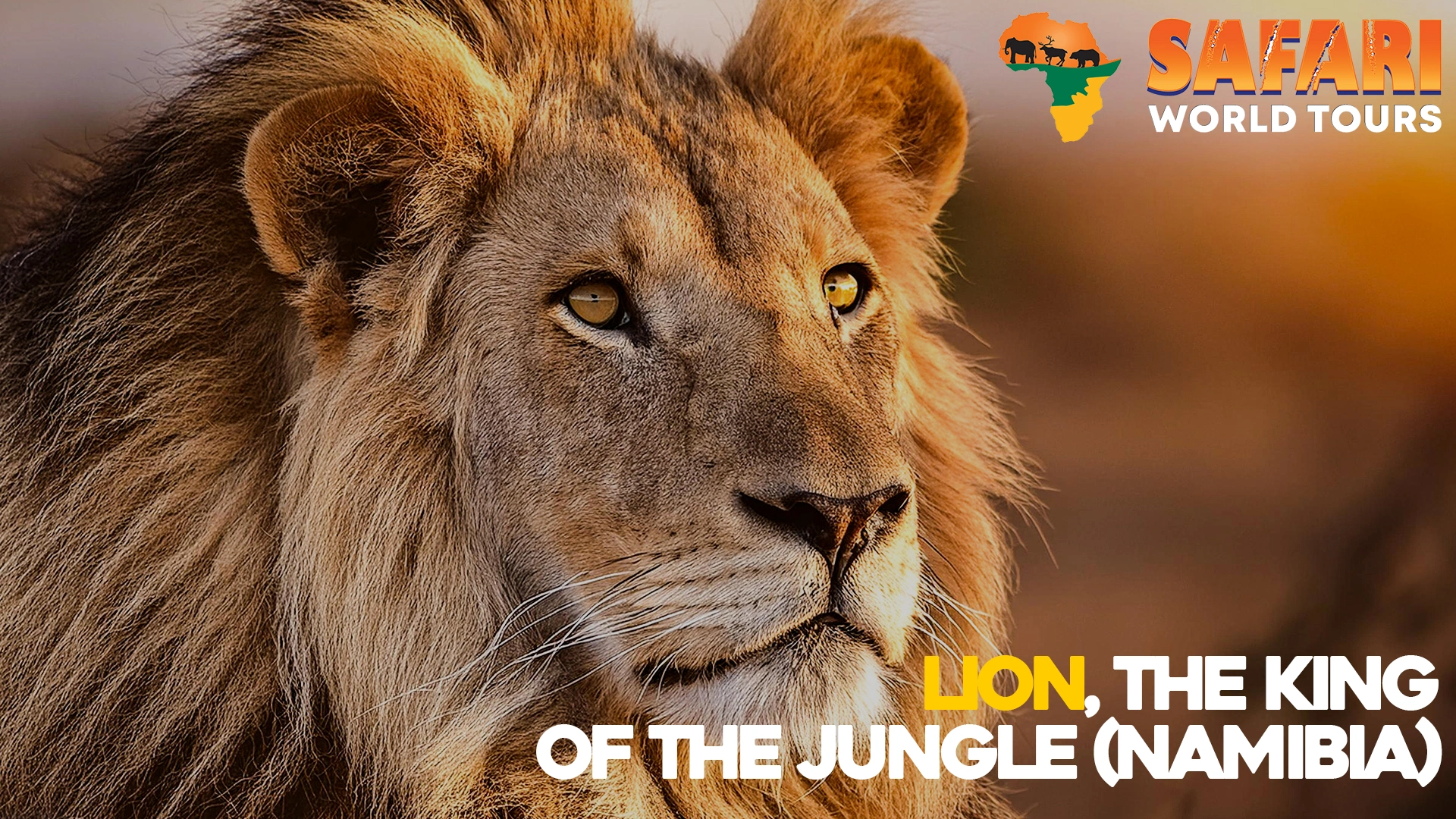Löwen in Namibia Wenn Sie über die faszinierende Landschaft der Skelettküste Namibias blicken, werden Sie die ungewöhnliche Wüstenlöwen, die eine Attraktion für Touristen aus aller Welt darstellen.
Sie haben wahrscheinlich schon viel über die Großkatze, den König des Dschungels, gehört, aber Sie werden erstaunt sein über den Anblick der großen Wüste
Es ist der ungewöhnlichste Löwe der Welt, der vollständig an die Wüste angepasst ist. In den trockenen Gebieten im Nordwesten Namibias wurden etwa 150 dieser Löwen gesichtet. Die Wüsten-Großkatzen waren in den 1990er Jahren vor allem aufgrund menschlicher Aktivitäten, insbesondere durch Jäger und Bauernlöwen in Namibia, vom Aussterben bedroht.
Die anhaltenden Angriffe auf sie und ihr Vieh waren maßgeblich dafür verantwortlich, dass die Großkatzen erschossen oder vergiftet wurden.
Allerdings konnte durch kontinuierliche Aufklärung der ländlichen Gemeinden ein wirksameres Wildtiermanagement ermöglicht werden, wodurch die Population der Wüstengroßkatzen enorm ansteigen konnte.
Löwen in Namibia Der Wüstenlöwe gilt als das größte Raubtier Namibias. Das ausgewachsene Männchen wiegt etwa 160 – 240 kg, das ausgewachsene Weibchen etwa 100 – 170 kg.

Es wurden verschiedene Untersuchungen durchgeführt, um herauszufinden, wie diese Großkatzen in trockenen Gebieten überleben. Zur Durchführung der Untersuchungen wurden verschiedene Ortungsgeräte und -techniken eingesetzt, und die Enthüllung war verblüffend: Löwen in Namibia.
Wie man herausfand, ernährten sich die Großkatzen von Meereslebewesen – ein Verhalten, das sich, wie sich herausstellte, noch neun weitere Male wiederholte.
Normalerweise ist es ungewöhnlich, dass Löwen Robben und einige dieser Wassertiere fressen. Man geht jedoch davon aus, dass die Anpassung an diese Ernährung auf die extremen Bedingungen in der Namib-Wüste zurückzuführen ist.
Als die Niederschläge abnahmen und der Wasserspiegel sank, hatten die Löwen Schwierigkeiten, sich zu ernähren. Daher passten sie sich an die Jagd auf Wassertiere an. Löwen in Namibia.
Die Löwen in Namibia haben sich an die Wüste angepasst und Fähigkeiten für die Jagd auf eine größere Bandbreite von Sumpfvögeln entwickelt, beispielsweise Kap-Pelzrobben, Flamingos und Kormorane, die ebenfalls in der Wüste Namibisch endemisch sind.
Im Gegensatz zu anderen Großkatzen leben Wüstengroßkatzen nicht in Nationalparks, sondern frei in trockenen, trockenen Gebieten. Die Löwen in Namibia leben an den nördlichen Rändern der Namibwüste, einem nicht eingezäunten, offenen System, in dem sich die Löwen frei bewegen können.
Die Großkatzen bewegen sich je nach Verfügbarkeit von Beute in verschiedene Richtungen. Die Einheimischen bezeichnen den Ort im Allgemeinen als „Ort ohne Menschen“.
BESUCHEN SIE DEN DSCHUNGEL
Wussten Sie, dass es in Namibia keine anderen Großkatzen wie diese Löwen gibt und dass dies der Hauptgrund ist, warum Tausende von Touristen hierher kommen? Sie werden es genießen, die Großkatzen der Wüste zu sehen. Safari-Touren über das trockene Land. Besucher haben auch die Möglichkeit, in das Gebiet zu fliegen, um einen großartigen Blick auf die malerische Landschaft zu genießen.
Es gibt geführte Safaris, bei denen Besucher die wunderschöne Landschaft erkunden und diese an die Wüste angepassten Könige des Dschungels sehen und mehr über ihr Überleben trotz des rauen Klimas erfahren können.
Es ist eine Erfolgsgeschichte, zu wissen, dass der König des Dschungels von Namibia in seine eigene Heimat und sein eigenes Territorium zurückgekehrt ist und eine Anpassungsfähigkeit entwickelt hat, die nur ihm eigen ist.
Auswirkungen der Trophäe auf Namibias Löwenpopulation

Trophäenjagd ist ein kontroverses Thema und ihre Auswirkungen auf Namibias Großkatzenpopulation sind Gegenstand zahlreicher Debatten unter Umweltschützern, Naturliebhabern und der Regierung.
Einerseits argumentieren die Befürworter, dass die Trophäenjagd Anreize für die lokale Bevölkerung bietet, die Großkatzen und ihren Lebensraum zu schützen, Einnahmen für den Artenschutz generiert und zur Regulierung der Großkatzenpopulation beiträgt (Löwen in Namibia).
Kritiker behaupten hingegen, dass die Trophäenjagd zu Überjagung, einem Rückgang der genetischen Vielfalt und einer Störung der Sozialstrukturen führen könne, was letztlich die langfristige Überlebensfähigkeit der Großkatzenpopulationen gefährde.
Namibia hat ein System der nachhaltigen Trophäenjagd eingeführt, das Quoten für die Großkatzenjagd festlegt und vorschreibt, dass ein Teil der Einnahmen aus Jagdgenehmigungen in lokale Artenschutzbemühungen reinvestiert werden muss. Löwen in Namibia
Befürworter dieses Systems argumentieren, dass es dazu beigetragen habe, die Löwenpopulation in Namibia in bestimmten Gebieten zu stabilisieren, beispielsweise in Schutzgebieten, wo die Einnahmen aus der Jagd zur Finanzierung von Maßnahmen zur Wildereibekämpfung und zur Wiederherstellung von Lebensräumen verwendet wurden.

Die Auswirkungen der Trophäenjagd auf Namibias Großkatzenpopulation sind jedoch komplex und kontextabhängig. Studien haben gezeigt, dass die Jagd zu Verhaltensänderungen bei Großkatzen führen kann, wie etwa einer Zunahme der nächtlichen Aktivität und einer Verschiebung der Beutepräferenz, was gravierende Auswirkungen auf das Ökosystem haben kann.
Darüber hinaus kann die gezielte Bekämpfung dominanter Männchen zu Störungen sozialer Strukturen und einer Zunahme von Kindstötungen führen, was sich negativ auf Bevölkerungswachstum und -stabilität auswirken kann.
FAQs
F: Wie viele Löwen gibt es in Namibia?
A: Nach neuesten Schätzungen gibt es in Namibia etwa 800 bis 1.000 Großkatzen.
F: Sind Löwen in Namibia vom Aussterben bedroht?
A: Obwohl die Großkatzenpopulation in Namibia in der Vergangenheit aufgrund von Lebensraumverlust und Jagd zurückgegangen ist, gelten Großkatzen im Land derzeit nicht als gefährdet. Sie sind jedoch weiterhin durch Faktoren wie Konflikte zwischen Menschen und Großkatzen, Wilderei und Trophäenjagd bedroht.
F: Welche Rolle spielen Löwen im Ökosystem Namibias?
A: Großkatzen sind Spitzenprädatoren und spielen eine wichtige Rolle bei der Regulierung des Gleichgewichts des Ökosystems in Namibia. Sie helfen dabei, die Population der Pflanzenfresser zu kontrollieren, was wiederum Auswirkungen auf die Vegetation und andere Wildtiere hat.
F: Was ist die größte Bedrohung für Großkatzen in Namibia?
A: Konflikte zwischen Menschen und Großkatzen, die entstehen, wenn Großkatzen Vieh oder Menschen jagen, stellen die größte Bedrohung für Großkatzen in Namibia dar. Dies führt häufig dazu, dass Bauern und andere lokale Gemeinschaften Großkatzen als Vergeltung töten.
F: Gibt es Bemühungen zum Schutz der Löwen in Namibia?
A: Ja, es gibt verschiedene Maßnahmen zum Schutz der Großkatzen in Namibia, darunter Anti-Wilderei-Patrouillen, gemeindebasierte Schutzprogramme und die Umsetzung nachhaltiger Trophäenjagdpraktiken.
F: Kann man auf eine Großkatze steigen? Safari in Namibia?
A: Ja, es gibt in Namibia mehrere Nationalparks und Reservate, in denen Sie auf Großkatzensafari gehen können, etwa im Etosha-Nationalpark, im Bwabwata-Nationalpark und im Waterberg-Plateau-Park.
F: Haben Löwen in Namibia eine kulturelle Bedeutung?
A: Ja, Großkatzen haben in vielen namibischen Gemeinschaften eine kulturelle Bedeutung. Sie werden oft als Symbol der Stärke und Tapferkeit angesehen und spielen in der traditionellen Folklore und Kunst eine wichtige Rolle.


